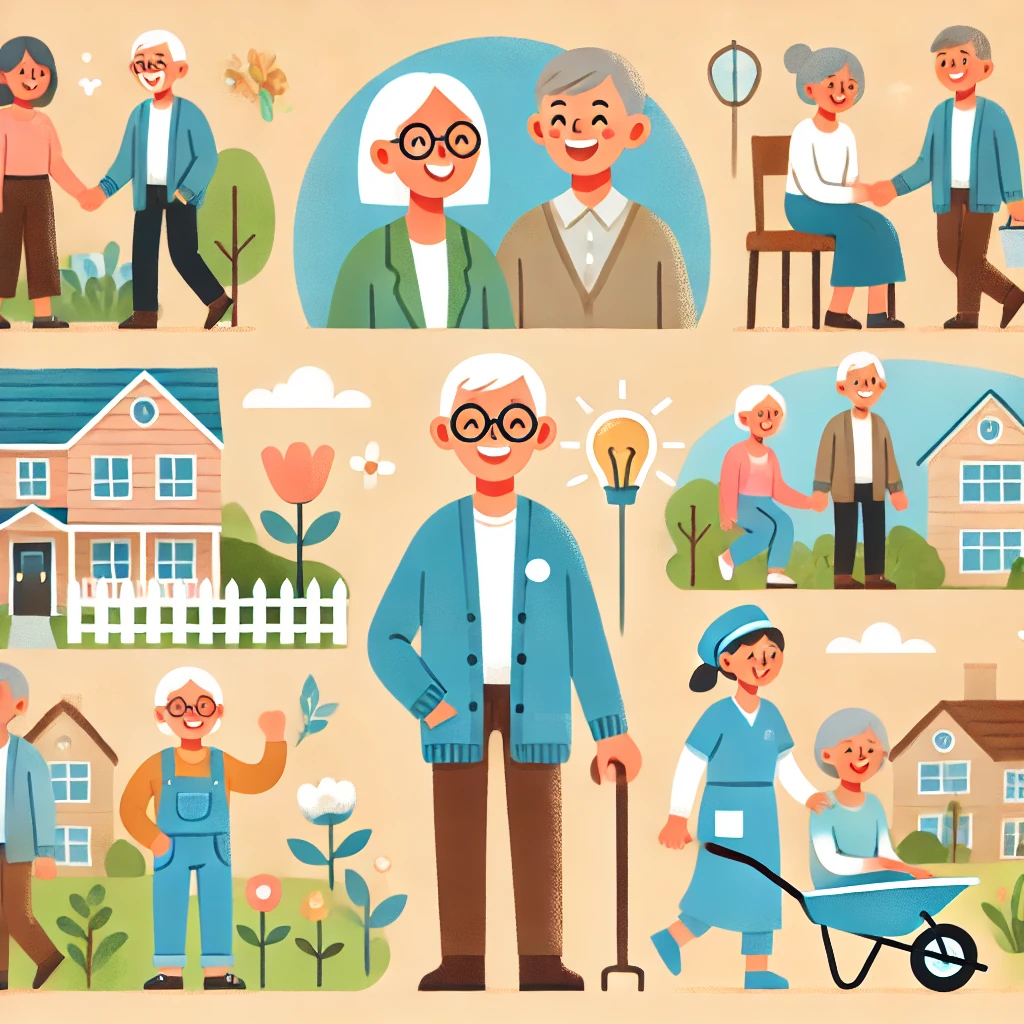Many families begin exploring senior living communities and wonder about the right age to make the move. The idea of “senior living” can feel broad. Some people picture retirement communities filled with active adults, while others think of assisted living or nursing homes. Each type of senior living has its own age guidelines and expectations.
This guide explains how old you have to be for senior living, the differences between communities, and why age is only one part of the decision.

Read: When to Move to Senior Living
Age requirements for independent living
Independent living communities are often the entry point into senior living. These neighborhoods or apartment-style residences usually set a minimum age requirement of 55 or 62 years old.
The age rule depends on community design and housing laws. A “55+ community” must have at least 80 percent of residents who are 55 or older. A “62+ community” requires every resident to be at least 62. These age restrictions are meant to create communities of peers who share similar stages of life.
Independent living focuses on lifestyle rather than care. Many seniors choose these communities in their late fifties or early sixties to downsize, avoid home maintenance, and enjoy a built-in social environment.
Explore What Are the Different Types of Senior Living Facilities
Age requirements for assisted living
Assisted living communities provide support with daily activities such as meals, bathing, or medication reminders. The minimum age requirement for assisted living is usually 60 to 65 years old.
However, exceptions exist. If a younger adult has a disability or chronic condition that requires the same type of support, they may qualify earlier. Most residents move into assisted living in their seventies or eighties when managing daily routines at home becomes difficult.
Explore Leo Carrillo Ranch Fame: From Stage and Screen to Cultural Legacy
Age requirements for memory care
Memory care communities serve people with Alzheimer’s disease and other forms of dementia. There is no strict minimum age, but most residents are seniors. The average age of entry is around the late seventies.
Early-onset Alzheimer’s or dementia can affect younger adults, and in these cases, memory care communities may accept residents well before traditional retirement age. What matters most is the need for a secure, structured environment with trained staff.

Age requirements for skilled nursing
Skilled nursing facilities, often called nursing homes, provide round-the-clock medical care. There is technically no minimum age requirement. Admission depends on medical need, not age.
A younger adult recovering from surgery, a serious illness, or a disability may enter a nursing home. Still, most residents are older adults in their seventies, eighties, or nineties who require daily medical support.
Continuing care retirement communities
Continuing care retirement communities, also called CCRCs, include independent living, assisted living, memory care, and skilled nursing all in one campus. The typical entry age for CCRCs is 62 or older, but some accept younger residents beginning at 55.
Because CCRCs are designed as long-term plans, many seniors move in while still active and independent. This ensures they have a stable home even as health needs change.
Why age is only one factor
While age requirements set general guidelines, the real decision about when to move into senior living depends on health, safety, and lifestyle goals.
Some people in their fifties move early to enjoy freedom from home maintenance and access to social activities. Others remain at home until their eighties, only moving when health conditions require more support.
Age alone does not decide readiness. What matters is whether a senior can live safely and happily in their current setting.
Benefits of moving earlier
Waiting until a crisis forces a move often creates stress. Moving earlier, while still active and healthy, has advantages. Seniors who enter communities in their sixties or early seventies adjust more easily, build friendships, and enjoy amenities like fitness classes, dining, and social programs.
By the time advanced care is needed, they already feel at home in the community. Families also benefit from having a long-term plan in place.
Learn What Is a Senior Living Advisor
Emotional side of age and senior living
The question of age is also emotional. Many seniors resist the idea of being “old enough” for senior living because they associate it with losing independence. But modern communities focus on wellness, enrichment, and purpose.
Framing the move as a lifestyle upgrade rather than a sign of decline helps seniors accept the idea. Age should not be seen as a limitation but as an opportunity to choose a community that supports the next stage of life.
Learn How to Monitor Seniors Living Alone
Life in senior living
Senior living today is more about thriving than simply aging. Communities emphasize health, connection, and purpose. Fitness classes, art programs, gardens, and cultural events create active environments where seniors feel fulfilled.
Places like Leo Carrillo Ranch, with its open-air spaces and historic setting, show how surroundings influence well-being. Senior living communities that create similar atmospheres give residents both comfort and inspiration.
Conclusion
How old you have to be for senior living depends on the type of community. Independent living often begins at 55 or 62. Assisted living usually starts around 60 or 65. Memory care and skilled nursing have no strict minimum age but focus on health needs. Continuing care retirement communities typically begin at 62.
In the end, age is only one part of the decision. What matters most is safety, health, and the chance to live a life filled with connection and purpose. Senior living is not about meeting an age requirement. It is about choosing the right time and the right place to thrive.
Go To Leo Carrillo Ranch